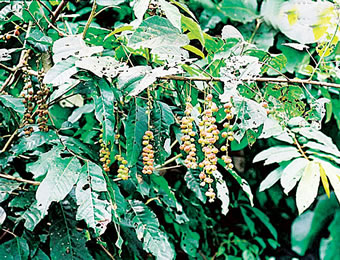For people with arthritis, common herbal remedies may improve walking, build strength and reduce pain. Experts have found common herbal remedies, including Alchornea cordifolia leaves, that could ensure less trouble moving due to stiff and painful joints.
In a new study, experts found that individuals can use herbs such as water decoction of Alchornea cordifolia leaves to ease rheumatic pains and enhancing physical performance.
Rheumatoid arthritis, a type of arthritis, is a long-lasting inflammatory disease that causes painful, stiff, swollen joints. Disease-modifying treatment, started as soon as possible, can slow or prevent the disease from wreaking havoc on the joints. Joints are places where two bones meet, such as your elbow or knee. Over time, a swollen joint can become severely damaged.
In Nigeria, it is estimated that 12.3 per cent of Nigerians in urban cities have rheumatoid arthritis. More females are also affected than males.
In the treatment of the disease, non-steroidal drugs, steroidal agents and immuno-suppressants are usually used but these drugs sometimes have unwanted effects thus, efforts are currently channelled towards discovering new drugs.
Alchornea cordifolia is commonly known as the Christmas bush. It is known by other names such as dove wood (English). Its local names include ewe eepa, esinsin, and eepa in Yoruba; baushe in Hausa, and edo or ubebe in Igbo.
In the indigenous system of medicine, the plant is used for the management of pain, rheumatism, and arthritis, pile, febrile convulsions, toothache and some other inflammatory disease states.
In West Africa, pulped root is widely taken to treat venereal diseases. Dried leaves or roots, alone or with tobacco, are smoked to cure cough. They are also taken as a blood purifier, as a tonic and to treat anaemia and epilepsy.
Leaf and root decoctions are widely used as mouth wash to treat ulcers of the mouth, toothache and caries, and twigs are chewed for the same purposes. The root and stem bark are used in the treatment of jaundice.
In Gabon and Congo, its root decoction or maceration is taken to treat amoebic dysentery and diarrhoea and used as eye drops to cure conjunctivitis. The rural populace of South-west Nigeria also employs the decoction of the leaves in the management of febrile convulsions in children.
In the study, the researchers evaluated the efficacy of different amounts of extracts of the leaves in rats, which were made to develop arthritis, to prove its efficacy in the local management of arthritis. Its effect was also compared with that from celecoxib, the conventional medication for treating arthritis.
Parameters such as the width of paw, body weight, full blood count as well as its effect on organs of the body such as the liver and kidney were assessed.
The researchers found that A. cordifolia significantly inhibited the experimentally induced arthritis as well as inflammatory markers in the animals. In addition, the anti-arthritic effect of A. cordifolia was found to be comparable to that of celecoxib.
The researchers, who also found the extract improved the weight gain pattern in the treated arthritic rats, suggested that this could be due to improvement in the arthritic state of the rats.
The 2014 study published in the African Journal of Traditional, Complement Alternative Medicine involved Adejuwon Adewale Adeneye; Adekunle Ibrahim Oreagba, Ismail Ogunbayode Ishola, and Hassanat Adeola Kalejaiye.
Overall, they declared, “the results of this study lend credence to the folkloric use of water decoction of Alchornea cordifolia leaves against rheumatoid arthritis.” They said, however, that further studies would be required to isolate and determine the content of the plant that works in treatment of arthritis.
Previously, researchers had also indicated its effectiveness in ameliorating pain and other inflammatory disease states such as toothache and pile.
In the journal, International Journal of Applied Research in Natural Products, researchers found that its pain lowering effect was dose-dependent, thus confirming the folkloric uses of the plant in painful disorders.
Also, its effect was comparable and not significantly different from that produced by common painkillers like aspirin and morphine. It also has a wide margin of safety and is well tolerated by the animals.

